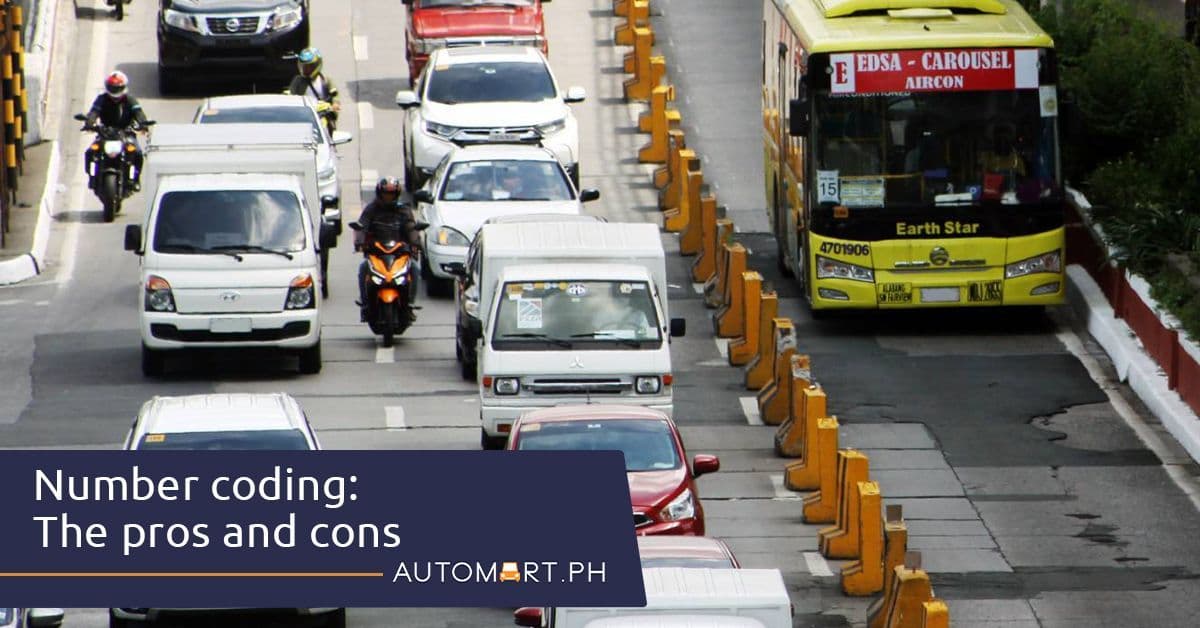
Number Coding: The Pros and Cons
Updated on December 18 2025
As you might have heard, the Metro Manila Development Authority (MMDA) is thinking about bringing back the United Vehicular Volume Reduction Program (UVVRP), also known as Number Coding. It was the result of the heavy Monday morning traffic last July 12 following the implementation of toll fees along Skyway Stage 3.
MMDA Chairman Benjamin "Benhur" Abalos, Jr. noted that EDSA is nearing its 388,000 capacity despite the ongoing pandemic. Not only that, the chairman reckons it might even get close to 400,000 vehicles as the days (or months) go by. Because of that, it is understandable why the agency is thinking about reimplementing coding.
But is it a good idea with the ongoing pandemic? Let's weigh the pros and cons.

Pro: (Somewhat) Reduced volume
We can argue all day about coding being truly effective in reducing congestion. Either way, there are less cars plying on the road due to the restriction. With real estate at a premium following the boom of auto sales, every square meter matters on the road. If there are enough cars off the road during key times of the day, it should help the flow of traffic.

Con: Potential bottlenecks
Here lies the rub of UVVRP. With that restriction in place, this will force more motorists (particularly one-car households) to travel before the coding window is in place. That means a larger chunk of motorists on the road before 7:00 AM. At the same time, it could cause a deluge of traffic once affected vehicles may rejoin the road by 8:00 PM. Yes, coding discourages travel of affected vehicles between 7:00 AM to 8:00 PM, it could cause a bottleneck before and after those times.
Pro: Promote more work-from-home programs
With the ongoing pandemic, it's safer to keep employees within their homes and limit their travel. Should the MMDA reimplement coding, this gives companies more reason to keep their personnel home within the safety of their own homes. This can also help companies find more ways to streamline their operations post pandemic, reducing on-ground personnel which could also reduce vehicle traffic.

Con: Commuting is still a struggle
But for those who have to report on-site, the reduced capacity of public transport has made travel tougher than pre-pandemic conditions. It has resulted in longer travel times, fatigue, along with time and efficiency loss due to the mentioned factors. This is a bigger problem for those in one vehicle households (be it car or motorcycle), or for those who don't have personal mobility. Yes, work from home programs are still around, but there will be times where employees have to head out and get work finished in the office or other sites. Then there's the matter of public transport being a spreader for the virus.

Where do we go from here?
For now, the MMDA has decided to put reintroduce coding on hold. As mentioned, public transport is limited, and the Libreng Sakay program is in limbo, further limiting mobility. In some ways, it was wise for the agency to hold off coding, but the price of that if congestion levels right before the country went on lockdown.
These aren't the only pros and cons of reimplementing coding, so we want to hear from you. Should the MMDA bring it back or postpone it once cases are a lot fewer? Is it a wise time to limit mobility or let the current status quo continue? There is a lot to factor in here, and it must be for the greater good.
If there is anything the pandemic highlighted, it's the need for personal mobility. While the MMDA is holding off coding, it will be much more difficult to move around if they restart it during these difficult times. A solution to this would be a second car, and we at Automart.PH will assist you once the need for a coding vehicle arises.